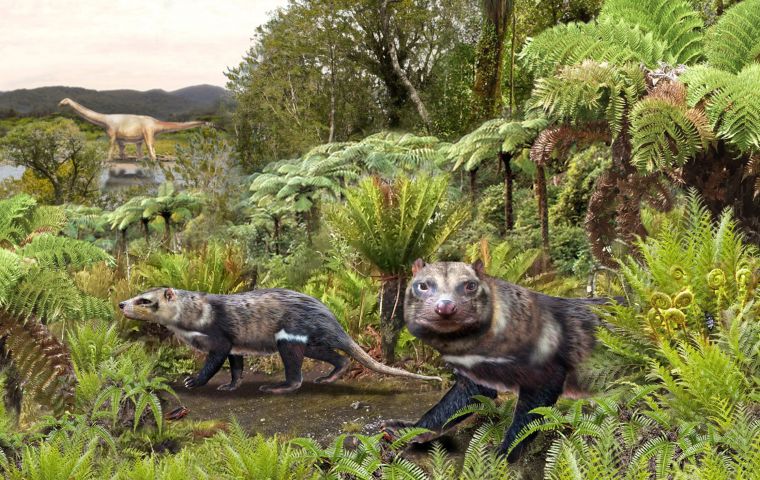MercoPress. South Atlantic News Agency
Chilean, Argentine scientists find remains of mammal from the age of dinosaurs
 Scientists believe it would be a mammal with an appearance and proportions similar to those of modern skunks.
Scientists believe it would be a mammal with an appearance and proportions similar to those of modern skunks. The University of Chile Thursday announced the discovery of the remains of a hitherto unknown species of a mammal that inhabited Patagonia some 74 million years ago.
The finding took place at a site believed to be one of the largest dinosaur fossil reservoirs in the region. According to researchers, this area was inhabited by prehistoric species from America and Antarctica that migrated millions of years ago through portions of land that were under the sea and that emerged after a drop in temperature.
The area of the discovery was highlighted by scientists for having great potential, since “the evolution of mammals during the Age of Dinosaurs is still very unknown and each discovery of a new species is an advance that draws attention worldwide” said palaeontologist Alexander Vargas, one of the project coordinators.
The fossil material was found in Cerro Guido, in the southern region of Magallanes, some 2,700 kilometres south of Santiago, after a jaw with five consecutive teeth was found.
“Cerro Guido and the valley of the Rio de las Chinas yield year after year new secrets about the last episodes of the Age of Dinosaurs, in one of the southernmost towns of continental origin in the world, with such diversity that it is helping to understand the complex history of Patagonia's connection with Antarctica and Oceania,” said Marcelo Leppe, Director of Chile's Antarctic Institute (Inach) and head of the scientific team involved in the discovery.
The new species was named Orretherium then. Based on the jaw fragment with dental pieces which indicate omnivorous habits, scientists believe it would be a mammal with an appearance and proportions similar to those of modern skunks such as the chingue. The new species is believed to be related to other mammals found in Argentine Patagonia.




Top Comments
Disclaimer & comment rulesCommenting for this story is now closed.
If you have a Facebook account, become a fan and comment on our Facebook Page!